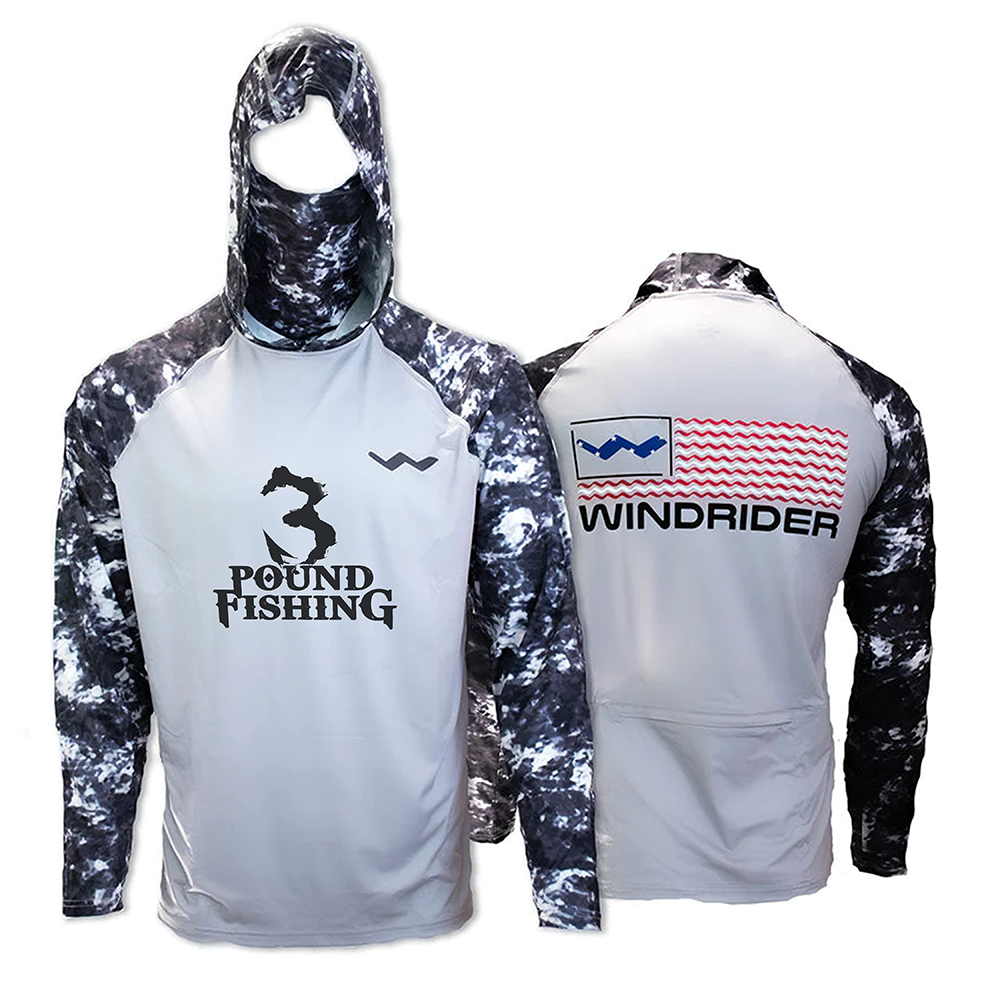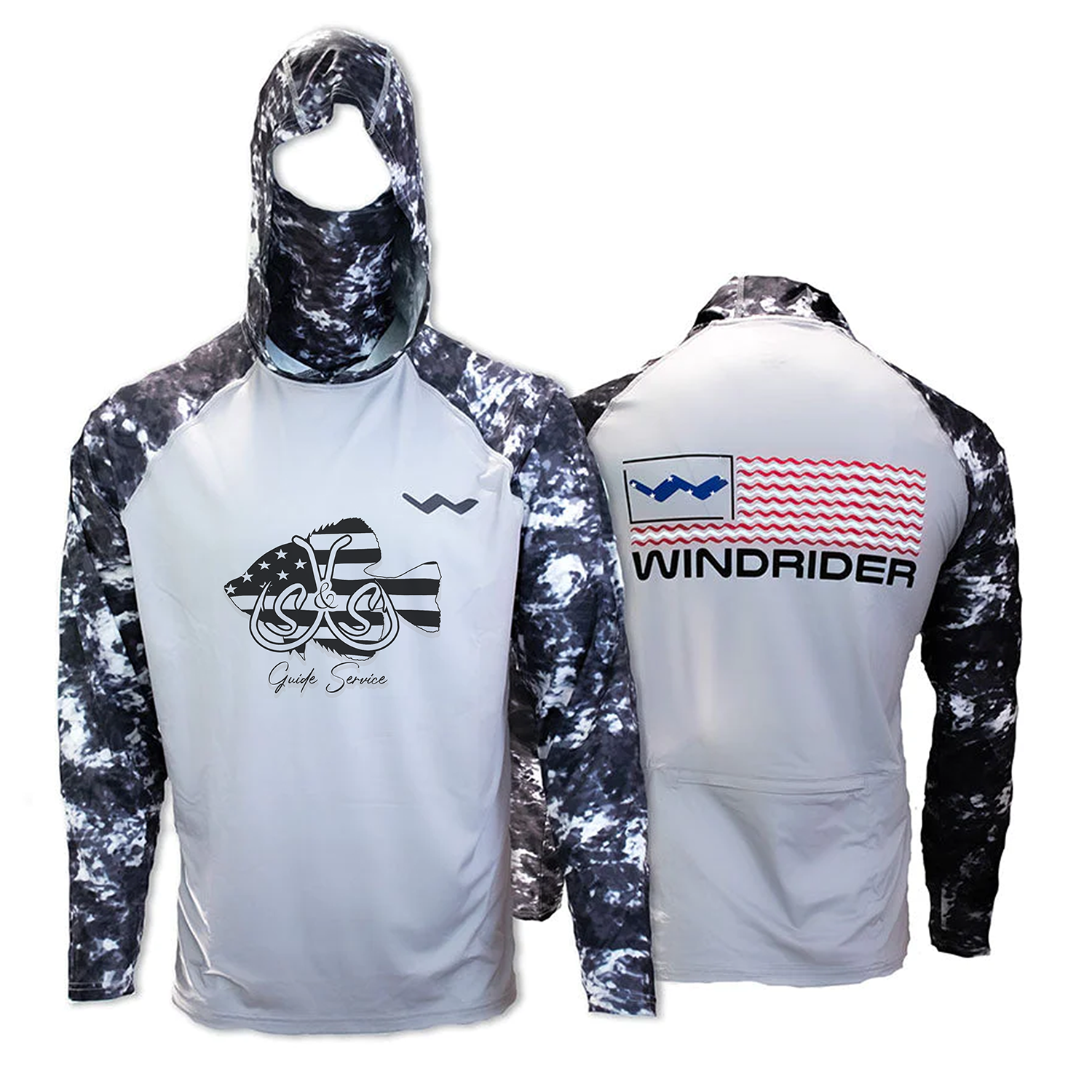How Snook Fishing Destroys Regular Clothing
These backcountry haunts push fishing apparel harder than any offshore or open-water outing ever could. Your sleeves are constantly snagged on mangrove limbs. Your torso collides with dock pilings as you work lures beneath structure. Your arms are forced through vegetative gaps where stubborn branches scrape and gnaw at fabric.
In these waters, cotton fishing shirts literally fall apart. Their natural fibers lack grit needed for abrasion, so they snag and rip at first brush with barnacle-clad rigging or serrated limbs of mangroves. Salt-saturated air further erodes cotton, compromising its integrity, thinning weave until perforations appear after mere 15-20 days of hard-fought fishing.
By time 3-4 weeks of snook fishing have slipped by, relentless grind of physical abrasion paired with salty exposure has already left cotton shirts looking battered. Seasoned snook anglers faced with that wear often end up swapping cotton for other fabrics each month during peak season—routine that piles up unnecessary expense and turns shirt shopping into never-ending chore.
Technical synthetic fabrics tackle those hurdles with engineered toughness. Polyester-nylon blends that constitute premium fishing shirts offer abrasion resistance, slipping past branches and other snag-prone obstacles that would tear cotton. Under constant salt exposure, synthetic fibers stay structurally sound, preserving their integrity for well beyond 150-200 days of fishing in unforgiving saltwater.
Managing Florida's Scorching Heat and Stifling Humidity

Snook fishing in Florida takes place under some of continent's most unforgiving heat. Summer days often see mercury soaring to 92-96°F with humidity hovering around 75-85%. That mix drives heat index beyond 105-110°F—zone where heat exhaustion and heat stroke become very real dangers.
Standing in boat for 6-8 hours under tropical sun while constantly casting will have your body boiling over with heat and drenching you in sweat. Your clothing then becomes way you regulate temperature—some fabrics will let heat escape while others simply trap warmth and moisture against skin.
Cotton's celebrated "cool breathable" reputation crumbles in muggy heat of Florida. Fibers soak up moisture, clinging sweat to skin while saturated air prevents it from evaporating. Instead of acting like ventilated shield, damp material becomes insulator, trapping body heat and leaving one in soggy uncomfortable state that speeds up dehydration and fatigue.
Technical fishing shirts operate on distinct principle—moisture-wicking. When perspiration breaks out, synthetic threads instantly draw sweat away from skin via capillary forces, dispersing it across shirt's outer surface. Under Florida's muggy atmosphere, that dispersal expands evaporative canvas, hastening heat loss and keeping you cooler.
The Helios shirt dries to roughly 80-90% in just 15-20 minutes even when it's blistering 85°F with 80% humidity. That rapid moisture-wicking keeps you comfortable and kicks in evaporative cooling, stopping dangerous heat buildup that can spoil long summer snook sessions.
Every seasoned Florida snook fisherman seems to share one wardrobe rule: opt for long-sleeve shirts and leave short sleeves or cotton tops behind. Reasoning is plain—effective moisture management keeps body cooler than promise of wearing less in sweltering high-humidity tropical climate.
Getting Through Mangrove Tunnels and Handling Abrasion
Landing haul of snook usually means threading your way through cramped mangrove tunnels and remote creeks, very spots where fish tend to linger when sun's up. Those tight tangled haunts put your angling know-how—and even grit of your gear—to test.
Piloting skiff through labyrinth forces you to wedge hull into slits barely wider than boat itself while twisted branches rasp both sides of craft and spill across channel. Your clothing stays in contact with scrub as you hunker, stretch, and shimmy your way through dense vegetation.
Red mangrove branches may lack cutting edge, but they still generate notable friction and tendency to snag. They trap cloth, pull at seams, and gradually grind away any material that repeatedly brushes past them. Over season of mangrove fishing, that constant low-grade abrasion builds up, eventually resulting in serious wear.
Helios shirt's laid-back silhouette grants ample room for motion while avoiding surplus that tends to hook onto branches. By comparison, baggier cuts constantly cling to underbrush and skin-tight tops can impede reach and agility essential in cramped environments. Settling squarely in middle, shirt's balanced fit delivers right mix of freedom and sleekness.
When working in challenging habitats, reinforced flat-lock seams are must-have. Usual way of sewing piles force along stitch line, so if material catches on something and is yanked, seam is likely to part. Flat-lock seams however spread stress across expanse of fabric while staying level with surface, which helps keep snags at bay.
Seasoned Everglades and backcountry guides report that premium technical fishing shirts keep their integrity throughout entire season (150-200 days) of relentless mangrove contact, while budget-friendly alternatives begin to show split seams and fabric damage after just 40-60 days.
Browse our waterproof rain gear for more options.
Navigating Fishing Hurdles on Bridges and Other Structures
Snook gather around bridges, docks, and other artificial structures that break up current and create natural ambush points. To fish those spots effectively, you need to run your lure up against pilings and beneath docks—tactic that inevitably puts you in direct contact with barnacle-encrusted surfaces.
Barnacles sport razor-sharp edges that will slice through low-grade fabrics moment they make contact. Leaning against piling to lock in casting angle, brushing dock post with arm while working lure, or bracing yourself against bridge piling in current all create openings for barnacle damage.
When barnacles latch onto cotton or cotton-blend fabrics, damage is immediate: cuts, tears, and snagged threads that quickly blossom into holes. Soft natural fibers simply lack toughness needed to combat those razor-sharp biological growths.
Synthetic fishing shirts display knack for shrugging off barnacle damage. Polyester-nylon weave slides past barnacle edges that would snarl and slice cotton. Though no material can claim barnacle-proofness, these engineered fabrics endure occasional scrape that would quickly ruin natural-fiber alternatives.
This durability is crucial for fishermen who often end up in situations where avoiding barnacle contact is simply not an option. In those moments, clothing essentially becomes protective gear, letting you fish confidently without constant worry of damaging equipment.
Color Selection for Florida Fishing

Color choice matters differently for Florida snook fishing compared to open-water applications.
Light blue ranks as most popular choice among Florida guides and serious snook fishermen. It provides excellent heat reflection (staying 10-12°F cooler than dark colors), conceals inevitable staining from fish handling and bait, and offers good stealth characteristics in clear backcountry waters where snook can be surprisingly spooky.
Light gray appeals to guides prioritizing professional appearance and maximum stain concealment. It hides muck, algae, and general grime accumulated during backcountry fishing better than any other light color while still providing good cooling properties.
White offers maximum cooling but shows every stain from fish handling, mud, and vegetation contact. It works better for offshore or clean-water fishing than dirty work of mangrove exploration and oyster bar wading.
Most serious snook fishermen own multiple colors, choosing based on specific fishing plans. Clean boat fishing days merit white for maximum cooling. Heavy backcountry sessions require light blue or gray for better stain tolerance.
Saltwater Resistance and Long-Term Durability
Snook fishing in Florida is essentially constant encounter with saltwater. Every outing brings veil of spray, occasional drenching from waves or rain, and that lingering humid brine that seeps into everything along coast.
Salt crystallization undermines cotton fabric from inside out. When salty water dries, microscopic salt crystals grow within yarn, their sharp edges acting like tiny knives that slice individual fibers. Each soak-dry cycle adds more of these microscopic blades, progressively weakening material. After 20-30 such cycles, cotton fishing shirt begins to look noticeably thinner, its tear strength drops, and it fails much sooner than it otherwise would.
Synthetic fishing shirt fabrics resist salt damage indefinitely. Polyester/nylon fibers don't absorb moisture or salt into their structure. Salt crystals form on surface where they're easily removed by freshwater rinsing. Fiber structure remains undamaged regardless of salt exposure count.
This salt resistance extends garment life dramatically. Quality technical fishing shirts maintain full structural integrity through 150-250 fishing days in harsh Florida saltwater conditions - representing 3-5 years of service for anglers fishing 50-75 days annually, or 1-2 full seasons for guides working 200+ days.
Financial sense becomes apparent when you break down cost-per-wear. $75 technical shirt that endures 200 fishing days works out to roughly $0.375 each time it's used. By contrast, $25 cotton shirt lasting 25 fishing days carries per-use price of $1.00. In short, technical shirt not only delivers superior performance but does so at less than half cost per fishing day.
Care and Maintenance for Maximum Life
Florida fishing's harsh conditions demand proper garment care to achieve maximum lifespan:
- Immediate freshwater rinse: Within 2-3 hours of finishing fishing, rinse shirt thoroughly in fresh water. This removes salt crystals, fish slime, and organic matter before they can set or cause damage.
- Regular washing: After 3-5 wears, machine wash in cold water with mild detergent. This helps remove oils, bacteria, and microscopic debris that would otherwise degrade fibers.
- Never use fabric softener: Fabric softener will permanently clog moisture-wicking channels that make technical fabrics work. Once those channels are blocked, you can't bring property back.
- Air dry when possible: Prolongs garment life by easing strain. Its rapid-dry property means air-dried shirt is ready to wear in 2-3 hours even in Florida's heavy humidity.

